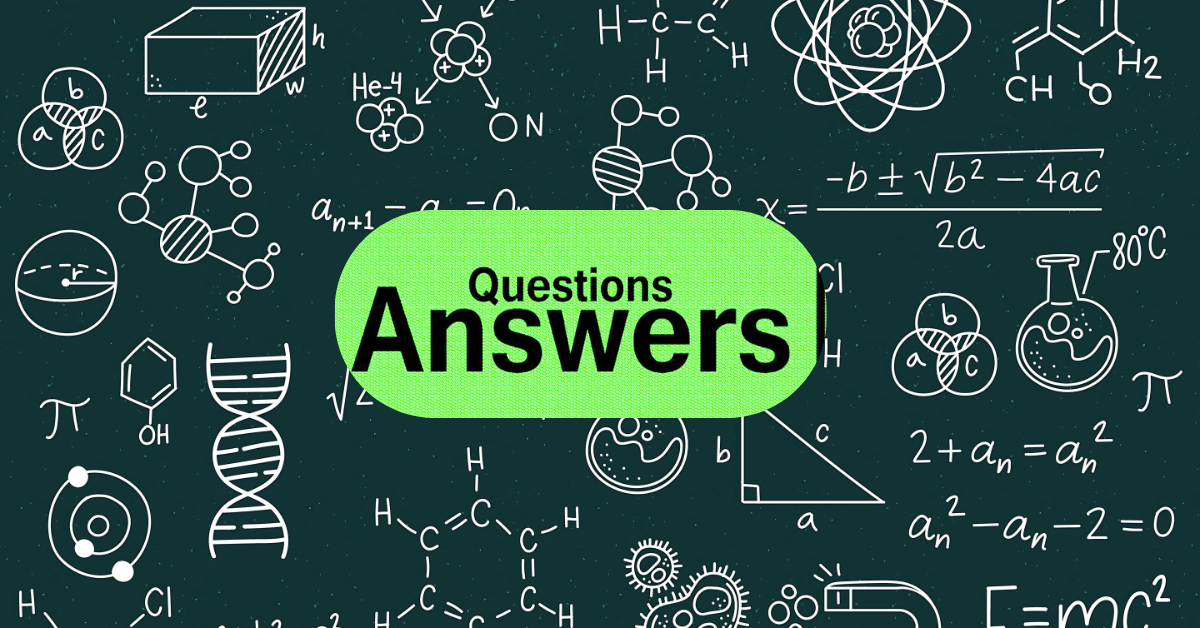SSC CHSL Previous Year Chemistry Questions: Chemistry is an important part of the General Science section in competitive exams like SSC CHSL, SSC CGL, and Railway exams. In the SSC CHSL Tier 1 exam, around 4–5 questions are usually asked from General Science, including Chemistry. With consistent practice and familiarity with the type of questions asked in previous years, aspirants can easily score well in this section. In this blog, we have compiled SSC CHSL Previous Year Chemistry Questions to help you prepare effectively for the upcoming exam.
Common Mistakes Students Make in Chemistry Questions During SSC CHSL Exam
Many students lose marks in Chemistry not because they don’t know the answers, but due to small mistakes. Below are the most common errors candidates make while attempting Chemistry questions in the exam:
- Not revising basic concepts and definitions properly
- Confusing similar sounding terms (e.g., acids vs. bases)
- Ignoring NCERT-level facts and directly jumping to tough topics
- Guessing without logic in factual questions
- Forgetting periodic table trends and element groups
- Not reading all options carefully before answering
- Misinterpreting simple questions due to exam pressure
Tips and Tricks to Solve Chemistry Questions in SSC CHSL
To score well in the Chemistry section of SSC CHSL, you need more than just memorization. Here are some tips and tricks to help you prepare smarter and solve questions faster in the exam:
- Focus on NCERT Class 6–10 Chemistry basics
- Revise the periodic table and element groups regularly
- Learn common acids, bases, and their uses in daily life
- Remember metal and non-metal properties through examples
- Practice previous year questions to spot repeated topics
- Use flashcards for formulas, symbols, and chemical names
- Avoid last-minute cramming do short, daily revisions
SSC CHSL Chemistry Questions
Chemistry plays an important role in the SSC CHSL exam, especially in the General Awareness section. Practicing Chemistry questions helps you remember key facts, formulas, and everyday science concepts. Solve these 30 important questions before your real exam to improve your confidence and accuracy.
- Which element is used in vulcanizing rubber?
(1) Silicon
(2) Bromine
(3) Sulphur
(4) Phosphorus
(5) Fluorine
Answer – (3)
Explanation – Sulphur forms cross-links in rubber during vulcanization. - Which gas contributes to stratospheric ozone depletion?
(1) CO₂
(2) CHCl₂F
(3) N₂O
(4) SO₂
(5) NH₃
Answer – (2)
Explanation – CHCl₂F (a CFC) releases Cl radicals that destroy ozone. - Which noble gas is used in cancer radiotherapy?
(1) Helium
(2) Neon
(3) Argon
(4) Krypton
(5) Radon
Answer – (5)
Explanation – Radon’s radioactivity is applied in radiotherapy. - Which metal can be beaten into thin sheets (malleable)?
(1) Sulphur
(2) Zinc
(3) Phosphorus
(4) Oxygen
(5) Nitrogen
Answer – (2)
Explanation – Zinc is a malleable metal that can be hammered into sheets. - Which metal oxide gives glass a blue tint?
(1) Iron(III) oxide
(2) Manganese oxide
(3) Cobalt oxide
(4) Chromium oxide
(5) Copper oxide
Answer – (3)
Explanation – Cobalt oxide imparts a deep blue color to glass. - Uraninite is the primary ore of which element?
(1) Aluminium
(2) Zinc
(3) Tungsten
(4) Uranium
(5) Tin
Answer – (4)
Explanation – Uraninite (pitchblende) contains uranium oxide. - Which base is commonly used as an antacid?
(1) Barium hydroxide
(2) Magnesium hydroxide
(3) Silver hydroxide
(4) Calcium hydroxide
(5) Sodium hydroxide
Answer – (2)
Explanation – Magnesium hydroxide (milk of magnesia) neutralizes excess stomach acid. - Which solvent is found in nail-polish remover?
(1) Benzene
(2) Ethanol
(3) Acetone
(4) Toluene
(5) Ethylene glycol
Answer – (3)
Explanation – Acetone easily dissolves nail polish resins. - Which acid gives lemon its sour taste?
(1) Malic acid
(2) Citric acid
(3) Phosphoric acid
(4) Carbonic acid
(5) Tartaric acid
Answer – (2)
Explanation – Citric acid is abundant in citrus fruits. - The chemical name of table salt is?
(1) Calcium chloride
(2) Magnesium chloride
(3) Sodium chloride
(4) Potassium chloride
(5) Ammonium chloride
Answer – (3)
Explanation – Table salt is NaCl, sodium chloride. - Which isotope of hydrogen is radioactive?
(1) Protium
(2) Deuterium
(3) Tritium
(4) Orthohydrogen
(5) Parahydrogen
Answer – (3)
Explanation – Tritium (³H) undergoes beta decay. - What is the pH of pure water at 25 °C?
(1) 6.0
(2) 6.8
(3) 7.0
(4) 7.4
(5) 8.0
Answer – (3)
Explanation – Pure water is neutral with pH 7 at 25 °C. - Which metal is obtained by electrolytic reduction of its molten chloride?
(1) Aluminium
(2) Iron
(3) Copper
(4) Gold
(5) Zinc
Answer – (1)
Explanation – Aluminium is produced via Hall–Héroult process from Al₂O₃ in molten cryolite. - Which gas is collected over water and absorbs in it?
(1) H₂
(2) NH₃
(3) Cl₂
(4) CO
(5) N₂
Answer – (2)
Explanation – Ammonia is highly soluble in water. - In which process is limestone used to purify iron in a blast furnace?
(1) Reduction
(2) Smelting
(3) Fluxing
(4) Roasting
(5) Calcination
Answer – (3)
Explanation – Limestone acts as a flux to remove impurities as slag. - Which vitamin is also known as ascorbic acid?
(1) Vitamin A
(2) Vitamin B₁
(3) Vitamin C
(4) Vitamin D
(5) Vitamin K
Answer – (3)
Explanation – Ascorbic acid is the chemical name for vitamin C. - Which compound causes greenhouse effect most strongly?
(1) CO₂
(2) O₂
(3) N₂
(4) Ar
(5) He
Answer – (1)
Explanation – Carbon dioxide traps infrared radiation in the atmosphere. - Which reagent is used to detect unsaturation in organic compounds?
(1) Benedict’s solution
(2) Baeyer’s reagent
(3) Tollen’s reagent
(4) Fehling’s solution
(5) Lucas reagent
Answer – (2)
Explanation – Cold dilute KMnO₄ (Baeyer’s test) decolorizes with alkenes/alkynes. - Which acid is used in pickling of iron?
(1) Sulphuric acid
(2) Hydrochloric acid
(3) Nitric acid
(4) Acetic acid
(5) Phosphoric acid
Answer – (2)
Explanation – HCl removes rust and scales from iron surfaces. - Which electrolyte is used in lead–acid battery?
(1) H₂SO₄
(2) NaOH
(3) KNO₃
(4) CaCl₂
(5) HNO₃
Answer – (1)
Explanation – Dilute sulphuric acid serves as the electrolyte in lead–acid cells. - Which element increases the hardness of steel?
(1) Oxygen
(2) Carbon
(3) Nitrogen
(4) Hydrogen
(5) Helium
Answer – (2)
Explanation – Carbon interstitially strengthens iron to form steel. - Which oxide of nitrogen is a major air pollutant?
(1) N₂O
(2) NO
(3) NO₂
(4) N₂O₅
(5) N₂
Answer – (3)
Explanation – Nitrogen dioxide (NO₂) contributes to smog and acid rain. - Which metal reacts vigorously with water at room temperature?
(1) Copper
(2) Silver
(3) Potassium
(4) Lead
(5) Zinc
Answer – (3)
Explanation – Potassium reacts violently with water to form KOH and H₂. - Which compound is common table antacid?
(1) NaHCO₃
(2) CaCO₃
(3) Al₂O₃
(4) SiO₂
(5) Fe₂O₃
Answer – (1)
Explanation – Baking soda (NaHCO₃) neutralizes stomach acid. - What is the hybridization of carbon in ethene (C₂H₄)?
(1) sp
(2) sp²
(3) sp³
(4) dsp²
(5) d²sp³
Answer – (2)
Explanation – Each carbon in ethene is trigonal planar, sp²-hybridized. - Which process converts solid directly to gas?
(1) Condensation
(2) Sublimation
(3) Vaporization
(4) Melting
(5) Freezing
Answer – (2)
Explanation – Sublimation is the transition from solid to gas phase. - Which reagent converts primary alcohol to aldehyde?
(1) PCC
(2) KMnO₄
(3) NaBH₄
(4) LiAlH₄
(5) H₂/Pt
Answer – (1)
Explanation – Pyridinium chlorochromate (PCC) selectively oxidizes primary alcohols to aldehydes. - Which is the hardest natural substance?
(1) Corundum
(2) Diamond
(3) Graphite
(4) Quartz
(5) Topaz
Answer – (2)
Explanation – Diamond ranks 10 on the Mohs hardness scale. - Which acid is strongest in aqueous solution?
(1) HCl
(2) HBr
(3) HI
(4) HNO₃
(5) H₂SO₄
Answer – (3)
Explanation – HI is the strongest among common hydrohalic acids in water. - Which phenomenon explains the rise of water in narrow tubes?
(1) Diffusion
(2) Capillarity
(3) Osmosis
(4) Surface tension
(5) Viscosity
Answer – (2)
Explanation – Capillary action draws water upward against gravity.
SSC CHSL Chemistry Questions- FAQs
Ans. Around 4–5 Chemistry questions are asked in the General Awareness section.
Ans. Yes, NCERT Class 6–10 Chemistry covers most concepts asked in SSC CHSL.
Ans. Rarely; questions are mostly factual, theory-based, and memory-oriented.
Ans. Revise definitions, avoid guessing, and practice previous year papers regularly.
Ans. No, Chemistry is only tested in Tier 1 under the General Awareness section.
- SSC CGL Exam Centers 2025 for Tier 1 and Tier 2, Choose Preferences
- SSC CGL Vs CAT, Which is the Better Career Option?
- SSC Typing Test – How to Attempt SSC Typing Test, Check Strategy
- SSC CGL vs IBPS PO Complete Comparison, Which is Better?
- Active Passive Voice for SSC Exams, Practice Questions with Solutions
- SSC Registration Number, Know How to Get Your Registration Number

Hello, I’m a content writer working at Oliveboard. I focus on creating blogs, articles, and educational content that’s simple, clear, and saves time for readers. I believe in writing that adds real value without overcomplicating things. I also have strong knowledge of banking and government exams, which helps me create content that is both accurate and easy to understand. With experience and consistency, I aim to make preparation smoother for every learner.
